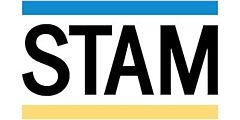Revealing crystal structures robotically
December 02, 2022 at 06:00 AM EST

TSUKUBA, Japan, Dec 2, 2022 - (ACN Newswire) - Researchers at the National Institute for Materials Science (NIMS) in Japan have automated a complex and labour-intensive process for analysing the results of X-ray diffraction studies, which are used to determine the structure of crystalline materials. The team described the development and application of their technique in the journal Science and Technology of Advanced Materials: Methods.
 |
| By combining machine learning with robotic process automation, researchers automated a mathematical procedure that determines the structure of crystalline materials. (Credit: ktsdesign/123rf) |
X-rays fired at a crystal interact with the geometric arrangement of its particles and are diffracted in many directions in a complex pattern of rays that depends on the crystal's precise structure. Experts analyse the pattern and intensity of the diffracted X-rays to determine the crystal's internal arrangement. This is a powerful and widely used process for revealing the three-dimensional atomic structure of new materials.
A well-established mathematical procedure, called Rietveld analysis, is used for interpreting X-ray diffraction data, but it is time-consuming and requires manual trial-and-error refinement of the results.
"To reduce human costs and resources, we have developed a robotic process automation (RPA) system that we apply to an existing Rietveld analysis program called RIETAN-FP," says Ryo Tamura of the NIMS team. "By using our new procedure, with the help of machine learning, we have succeeded in performing Rietveld analysis automatically," Tamura adds.
The automation can be run on a personal computer and can reduce human error as well as greatly speed up the data analysis.
Tamura explains that the field of materials science already relies on numerous graphical user interface (GUI) applications to calculate a material's properties, control experimental equipment, or analyse material data. He says that combining this new RPA and machine learning ability with these applications achieves a "closed loop" to automatically design and analyse materials with minimal human intervention.
The researchers verified the accuracy of their procedure by analysing samples of powdered compounds whose crystal structures are already known. The ability to determine the structures from powdered samples is one of the great strengths of Rietveld analysis. It avoids the need to grow large single crystals, which can be extremely difficult to obtain for some materials.
"Automating Rietveld analysis brings a very powerful new tool into the entire field of materials science," Tamura concludes.
The researchers are now working to further refine their procedure to make it suitable for more complex crystal structures. Another aim is to explore the use of their machine learning RPA strategy for more general applications in materials science. The possibilities include numerous simulation methods used for calculating material properties, and also applications for controlling experimental equipment. The success achieved thus far with X-ray diffraction could just be the start for Rietveld robotics.
Further information
Ryo Tamura
National Institute for Materials Science
Email: tamura.ryo@nims.go.jp
About Science and Technology of Advanced Materials: Methods (STAM Methods)
STAM Methods is an open access sister journal of Science and Technology of Advanced Materials (STAM), and focuses on emergent methods and tools for improving and/or accelerating materials developments, such as methodology, apparatus, instrumentation, modeling, high-through put data collection, materials/process informatics, databases, and programming. https://www.tandfonline.com/STAM-M
Dr. Yasufumi Nakamichi
STAM Methods Publishing Director
Email: NAKAMICHI.Yasufumi@nims.go.jp
Press release distributed by Asia Research News for Science and Technology of Advanced Materials.
Source: Science and Technology of Advanced Materials
Copyright 2022 ACN Newswire . All rights reserved.
More News
View More
Up Over 20% in 2025, These 3 Stocks Are Boosting Buyback Capacity ↗
December 01, 2025
Via MarketBeat

Congress Beat the Market Again—Here Are the 3 Stocks They Bought ↗
December 01, 2025
Via MarketBeat

Go on a Shopping Spree With 3 Top Retail ETFs ↗
December 01, 2025

3 Fresh Dividend Hikes That Might Be Telling You Something ↗
December 01, 2025

Recent Quotes
View More
Stock Quote API & Stock News API supplied by www.cloudquote.io
Quotes delayed at least 20 minutes.
By accessing this page, you agree to the Privacy Policy and Terms Of Service.
Quotes delayed at least 20 minutes.
By accessing this page, you agree to the Privacy Policy and Terms Of Service.
© 2025 FinancialContent. All rights reserved.
>